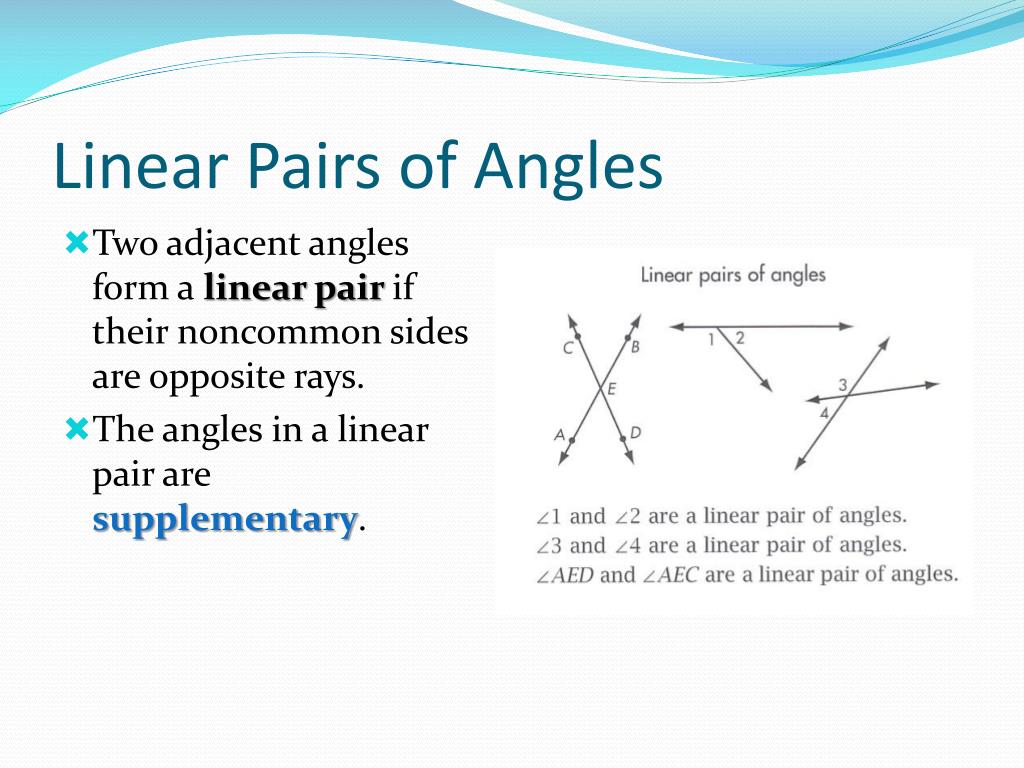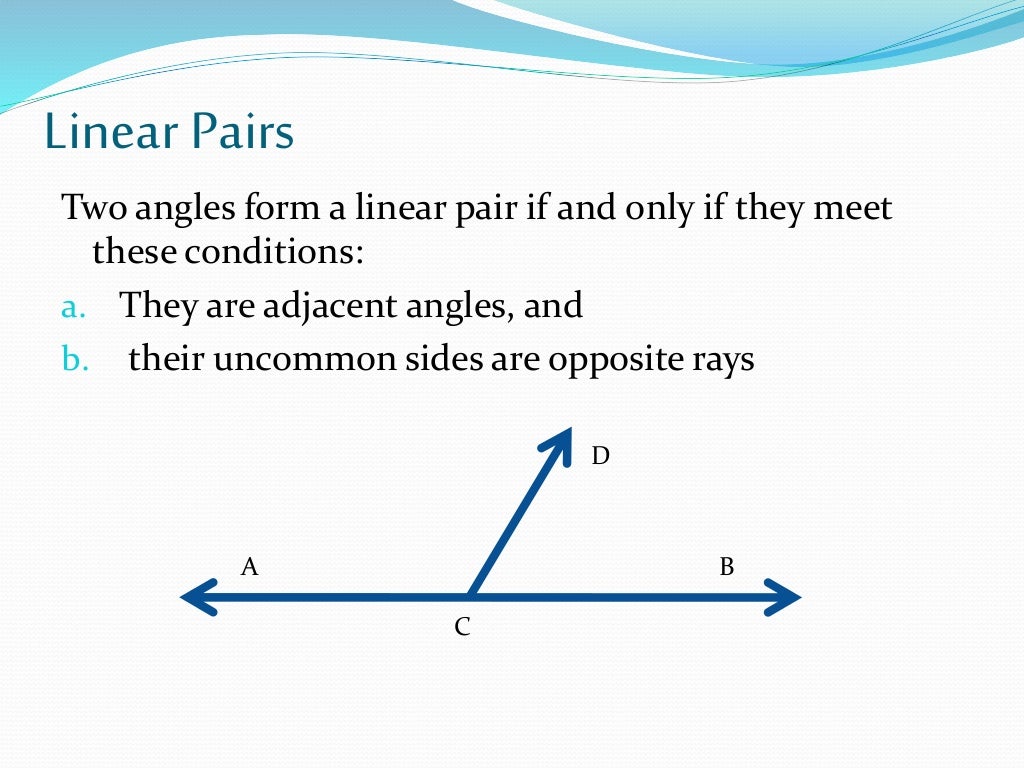Two Angles Form A Linear Pair - Web any two angles that sum to 90 ∘ are complementary angle pairs. Such angles are also known as supplementary angles. In the diagram above, ∠abc and ∠dbc form a. 1) the angles must be supplmentary. Web solution verified by toppr two angles forming a linear pair are supplementary as there sum is 180 o was this answer. Two angles are said to be linear if they are adjacent. The angles are said to be linear if they are adjacent to each other after the intersection of the two lines. In the above figure, ∠ abc and ∠ def are two. In the picture below, you can. Two angles are said to be linear if they are.
Which statement is true about this argument? Premises If two angles
For example, ∠ a =. Web which of the following statements are true., (t) and which are false (f)? A linear pair of angles is formed when two lines intersect. Two angles are said to be linear if they are adjacent. 1) the angles must be supplmentary.
Name two angles that form a linear pair.
The angles are said to be linear if they are adjacent to each other after the intersection of the two lines. Web a linear pair of angles has two defining characteristics: A linear pair are two angles that makes a line. In the figure, ∠ 1 and ∠ 2 form a linear pair. The sum of angles of a linear.
NCERT Class 7 Mathematics Solutions Chapter 5 Linear and Angles
A line is 180 degrees. Two adjacent angles, if not equal to 180. Such angles are also known as supplementary angles. Two angles are said to be linear if they are adjacent. A linear pair are two angles that makes a line.
which pair of angles is a linear pair?
Web when two lines intersect each other at a single point, linear pairs of angles are formed. Such angles are also known as supplementary angles. Web a linear pair is a pair of adjacent angles formed when two lines intersect. In the above figure, ∠ abc and ∠ def are two. A line is 180 degrees.
Ex 5.1, 9 Adjacent Angles, Linear Pair of angles, Vertically Opposit
Web solution verified by toppr two angles forming a linear pair are supplementary as there sum is 180 o was this answer. (i) angles forming a linear pair are supplementary. A linear pair are two angles that makes a line. Web in geometry, a linear pair of angles is a pair of adjacent angles formed when two lines intersect each.
PPT Lesson 2.6 Parallel Lines cut by a Transversal PowerPoint
2) the angles must be adjacent. Web two angles form a linear pair. From the figure, ∠1 + ∠2 = 180°. The measure of one angle is twice the measure of the other angle im kinda. In the figure, ∠ 1 and ∠ 2 form a linear pair.
PPT Geometry Review Angles and Parallel Lines PowerPoint Presentation
A line is 180 degrees. A linear pair are two angles that makes a line. For example, ∠ a =. 2) the angles must be adjacent. Web two angles form a linear pair.
The two angles below form a linear pair, and the expressions are
Two angles are said to be linear if they are adjacent. Web two angles form a linear pair. Web two angles form a linear pair.the measure of one angle is 8 times the measure of the othe angle.find the measure of each angle. 2) the angles must be adjacent. Web the sum of two angles in the linear pair is.
Linear pair
Such angles are also known as supplementary angles. Web which of the following statements are true., (t) and which are false (f)? In the above figure, ∠ abc and ∠ def are two. For example, ∠ a =. The measure of one angle is twice the measure of the other angle im kinda.
Two angles forming a linear pair are always
Web first we need to define what is a linear pair? The sum of angles of a linear pair is always equal to 180°. Web two angles form a linear pair.the measure of one angle is 8 times the measure of the othe angle.find the measure of each angle. Web a linear pair is a pair of adjacent angles formed.
A linear pair are two angles that makes a line. Web any two angles that sum to 90 ∘ are complementary angle pairs. The angles are said to be linear if they are adjacent to each other after the intersection of the two lines. Linear pair of angles are formed when two lines intersect each other at a single point or at a common point of. Web the concept of linear pairs is that if there is a straight line and another line intersects the straight line at a point, then the two angles. 1) the angles must be supplmentary. Web the sum of two angles in the linear pair is always 180 degrees. From the figure, ∠1 + ∠2 = 180°. The sum of angles of a linear pair is always equal to 180°. Such angles are also known as supplementary angles. Web first we need to define what is a linear pair? Web a linear pair is a pair of adjacent angles formed when two lines intersect. (i) angles forming a linear pair are supplementary. A linear pair of angles is formed when two lines intersect. A linear pair of angles is formed when two lines intersect. The measure of one angle is twice the measure of the other angle im kinda. Web in geometry, a linear pair of angles is a pair of adjacent angles formed when two lines intersect each other. 2) the angles must be adjacent. Web which of the following statements are true., (t) and which are false (f)? Web a linear pair of angles has two defining characteristics:
The Measure Of One Angle Is Twice The Measure Of The Other Angle Im Kinda.
In the diagram above, ∠abc and ∠dbc form a. A linear pair are two angles that makes a line. A linear pair of angles is formed when two lines intersect. In the figure, ∠ 1 and ∠ 2 form a linear pair.
In The Picture Below, You Can.
Two angles are said to be linear if they are. Web the concept of linear pairs is that if there is a straight line and another line intersects the straight line at a point, then the two angles. Two angles forming a linear pair are supplementary, which is equal to 180 ∘. Web which of the following statements are true., (t) and which are false (f)?
Such Angles Are Also Known As Supplementary Angles.
Web a linear pair of angles has two defining characteristics: 2) the angles must be adjacent. Web in geometry, a linear pair of angles is a pair of adjacent angles formed when two lines intersect each other. Two adjacent angles, if not equal to 180.
The Angles Are Said To Be Linear If They Are Adjacent To Each Other After The Intersection Of The Two Lines.
(i) angles forming a linear pair are supplementary. Linear pair of angles are formed when two lines intersect each other at a single point or at a common point of. Web from the internet: 1) the angles must be supplmentary.










